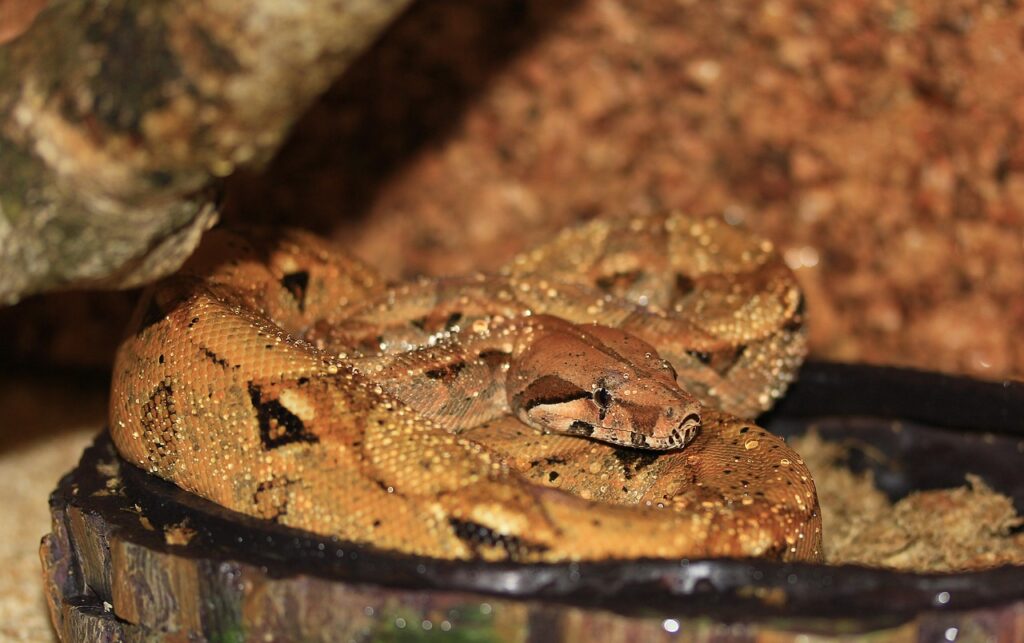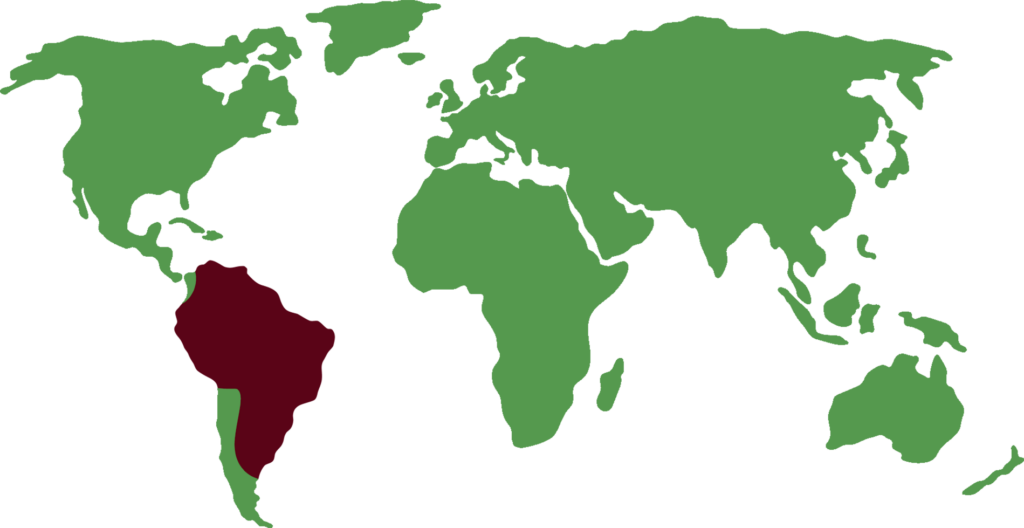RED-TAILED BOA
Boa constrictor

LENGTH

3,7 m
WEIGHT

6 kg
LIFESPAN

40 years
The boa constrictor is a widely distributed species that lives primarily in South America. As a result, the appearance of this snake varies greatly depending on the specific locality.
General characteristics
They measure between 1.3m and 2.3m in length, although they can reach up to 3.7m when fully grown. They weigh around 6kg, but females are significantly larger than males.
Colouring may vary according to the region, but they are generally a brown, grey or cream base color, with brown or reddish-brown patterns that become more pronounced on the tail.
On the top of the head there is a longitudinal line from which, at the level of the eyes, black lateral projections emerge.
Feeding
Mainly mammals, birds and lizards. The size of the prey increases as it ages. They are called boa constrictors because they use constriction as a hunting method, in which they strangle prey with their bodies.
Behaviour
They generally live alone and do not interact with other snakes unless they want to mate. They are crepuscular, but may bask in the sun during the day when night temperatures are too low.
Boas can climb trees and bushes in search of food, however, they become primarily terrestrial as they get older and heavier.
These animals attack when they perceive a threat and their bite can be painful, especially in large boas. During their moulting cycle they are more unpredictable because the substance that lubricates between old and new skin makes their eyes milky, blue or opaque and they do not see very well. For this reason, they become more defensive than ever.
They are able to regulate their body temperature by using external heat sources, such as the sun and warm rocks.
Reproduction
Boa constrictors are polygamous and viviparous. They breed in the dry season, between April and August. Reproduction is mainly sexual and may occur several times in a period of a few weeks.
Gestation lasts 3-4 months, after which young are born, measuring between 38 and 52 cm in length. Litter size varies, but may have between 10 and 65 young, although some may be stillborn or are unfertilised eggs.
Threats
One of the main threats to the Boa imperator is over-collection for the pet or fur trade.
Distribution
It is a species native to the tropical regions of South America. They live in tropical rainforests due to the humidity, temperature, cover from potential predators and abundance of prey.

Did you know?
This species is one of only two snakes with a confirmed XY sex chromosome system.
They can squeeze with a pressure of up to 13 times their own body weight.
Boas can open their jaws very wide to engulf prey that is larger than their own head.
Conservation status
